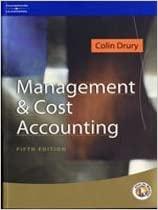Intermediate: Computation of labour and material variances for a hotel You work as the assistant to the
Question:
Intermediate: Computation of labour and material variances for a hotel You work as the assistant to the management accountant for a major hotel chain, Stately Hotels pic. The new manager of one of the largest hotels in the chain, the Regent Hotel, is experimenting with the use of standard costing to plan and control the costs of preparing and cleaning the hotel bedrooms.
Two of the costs involved in this activity are cleaning labour and the supply of presentation soap packs.
Cleaning labour:
Part-time staff are employed to clean and prepare the bedrooms for customers. The employees are paid for the number of hours that they work, which fluctuates on a daily basis depending on how many rooms need to be prepared each day.
The employees are paid a standard hourly rate for weekday work and a higher hourly rate at the weekend. The standard cost control system is based on an average of these two rates, at £3.60 per hour.
The standard time allowed for cleaning and preparing a bedroom is fifteen minutes.
Presentation soap packs:
A presentation soap pack is left in each room every night. The packs contain soap, bubble bath, shower gel, hand lotion etc. Most customers use the packs or take them home with them, but many do not. The standard usage of packs used for planning and control purposes is one pack per room night.
The packs are purchased from a number of different suppliers and the standard price is £1.20 per pack. Stocks of packs are valued in the accounts at standard price.
Actual results for May:
During May 8400 rooms were cleaned and prepared. The following data were recorded for cleaning labour and soap packs.
(iv)the labour efficiency variance (some¬ times called the utilization variance);
(b) Prepare a standard costing statement reconcil¬ ing the actual marginal cost of production with the standard marginal cost of production. After Richard Hill has received your standard costing statement, you visit him to discuss the variances and their implications. Richard, however, raises a number of queries with you. He makes the following points:
• ■ An index measuring material prices stood at 247.2 for May but at 240.0 when the standard for the material price was set.
• The Eastern division is budgeted to run at its normal capacity of 8000 units of production per month, but during May it had to manu¬ facture an additional 1500 Betas to meet a special order agreed at short notice by Melton’s sales director.
• Because of the short notice, the normal supplier of the raw material was unable to meet the extra demand and so additional materials had to be acquired from another supplier at a price per litre of £22.
• This extra material was not up to the normal specification, resulting in 20% of the special purchase being scrapped prior to being issued to production.
• The work force could only produce the special order on time by working overtime on the 1500 Betas at a 50% premium.
Task 2
(a) Calculate the amounts within the material price variance, the material usage variance and the labour rate variance which arise from producing the special order.
(b) (i) Estimate the revised standard price for materials based on the change in the material price index.
(ii) For the 8000 units of normal production, use your answer in
(b) (i) to estimate how much of the price variance calcu¬ lated in Task 1 is caused by the general change in prices.
(c) Using your answers to parts
(a) and
(b) of this task, prepare a revised standard costing state¬ ment. The revised statement should subdivide the variances prepared in Task 1 into those elements controllable by Richard Hill and those elements caused by factors outside his divisional control.
(d) Write a brief note to Richard Hill justifying your treatment of the elements you believe are outside his control and suggesting what action should be taken by the company.
AAT Technicians Stage
Step by Step Answer:






